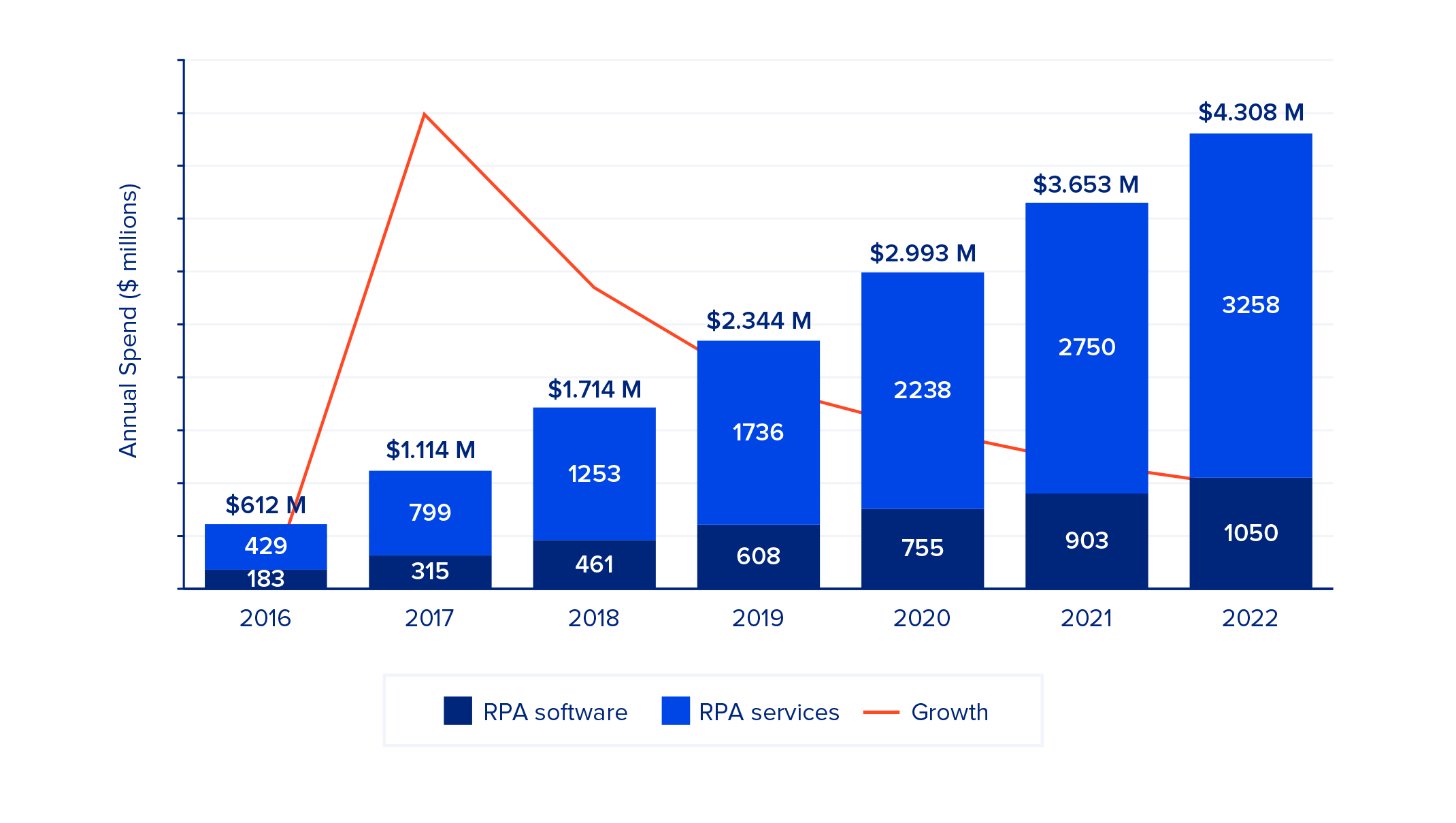
A study commissioned by UiPath found that almost 50% of the world’s businesses are looking to adopt robotic process automation (RPA) as a direct result of the pandemic. But RPA is just one piece of the automation puzzle.
“Hyperautomation” is a trend which Gartner first coined, and cites as one of its top ten technology trends of 2021. It’s also been referred to as “digital process automation” by Forrester and “intelligent process automation” by the IDC.
With the rapid evolution of artificial intelligence, we’re seeing automation take hold across a breadth of industries. The problem, however, is that many companies are struggling to optimise while navigating a jumble of new and legacy systems.
Coronavirus has certainly expedited the need to clean up operations and be less reliant on human staff. But the goal of hyperautomation isn’t to replace humans altogether. It is to ease the burden of more tedious, simplistic tasks so that our brains can be put to more creative, strategic use. The view is that by combining comprehensive automation with human ingenuity, businesses will be able to operate at a higher level and provide a better customer experience.
So, what exactly is hyperautomation and how do we get there?
What is hyperautomation?
As its name suggests, hyperautomation describes a deep level of digital autonomy; the process of automating end-to-end business operations to unburden human workers, optimise efficiencies and reduce costs. This can be facilitated through a combination of cutting-edge technologies, including AI and machine learning, robotic process automation (RPA) and intelligent business process management (IBPM).
Gartner defines hyperautomation as “the idea that anything that can be automated in an organisation should be”. It’s driven by the need to streamline what is, for the majority of businesses, a disjointed hotchpotch of new and old systems and processes which aren’t efficient, agile or synchronised. Operating in this way is technically problematic, cumbersome and incredibly expensive for companies. And, with the digital era accelerating, businesses need to develop agility if they’re to keep pace with the market—let alone compete.
Which technologies enable hyperautomation?
Whether or not a business can be automated depends on the state of its current IT ecosystem and business processes. Hyperautomation isn’t a single entity. It comprises multiple different technologies, connected via the Internet of Things, which work in unison to enable end-to-end automation. Let’s take a look at some of the key elements.
Robotic process automation
RPA describes the process of harnessing technologies such as bots to take over manual tasks that would normally be performed by humans. For example, the quality control of goods moving down a conveyor belt. RPA can only perform tasks that are rule-based, with a predefined set of inputs and outputs. Thus, it’s not an intelligent system with the capability of processing new information and learning new actions. This means that, by itself, it’s only suitable for tasks that require precise repetition and pre-programmed outcomes. To ensure successful RPA adoption, one should also keep in mind the security risks associated with this technology.
Artificial intelligence and machine learning
When we think of common applications of AI today, we think of things like intelligent marketing algorithms which can push products and promotions towards segmented customer groups, or virtual assistants like Alexa and Siri.
AI is the next step on from RPA, whereby computers are able to simulate human intelligence, and this unlocks a far deeper level of automation than RPA alone can. With AI and machine learning, tasks can be executed without the need for rigid inputs and outcomes, because the machine has learning capabilities which increase over time. Thus, they could be used to help an organisation continuously improve its processes. Implementing machine learning, businesses can unlock powerful insights which will allow them to support future actions and strategies, deliver a new level of service to their customers, and to build better efficiencies within their organisations.
Though AI and ML are a key component of hyperautomation, they’re tricky to implement and resource-heavy. So, in order to harness them successfully, a comprehensive implementation strategy is needed.
Intelligent business process management
Intelligent business process management approach combines business process management (BPM) software with the capabilities of artificial intelligence (AI). This is really the linchpin of hyperautomation. IBMP describes software which has the ability to manage the switch to a hyperautomated environment. IBMP is a strategic tool which has the ability to handle the processes, strategy and workflow involved in enabling end-to-end automation – and to monitor the results so that issues can be resolved.
IBPM system can connect and coordinate people, machines and IoT instances, allowing to cover traditional business process management requirements within an organisation in a more advanced way. These technologies enable a greater level of collaboration, intelligence and support for the organisation's specific business processes and decisions. Without it, companies would struggle to integrate new automation technologies without major disruption to their operations.

How can hyperautomation benefit businesses?
Business agility achieved through AI-driven decision-making is the fundamental goal of hyperautomation, but the benefits are many. Some of the key advantages are:
- Ability to adjust to changes. Hyperautomation enables organisations to automate the entire workflows end-to-end, allowing them to scale and flex their operations far more easily. Which, in such a fast-moving business landscape, means the difference between failure and survival. What's more, RPA can help organisations introduce additional adaptability and flexibility to their business operations. Since RPA systems can be quickly adapted to changing conditions and situations, they can effectively handle constant process changes, eliminating the risk of the mistakes associated with the human factor and freeing human resources.
- Real-time insights. We often talk about “real-time” in terms of tech. But, until now, real-time hasn’t been exactly that. With hyperautomation and its components working in harmony with one another, the term takes on its true meaning. This means that businesses can instantly identify operational gaps and issues, which enables quicker decision-making and, thus, a better customer experience.
- Efficiency. Far from replacing human workers, deep automation will make them infinitely more valuable to their companies. By automating the laborious and time-consuming tasks, human employees will become freer to take on more significant, strategic roles within their organisations.
- Better ROI. When processes and systems are optimised across an entire enterprise, costs can be reduced and profits boosted. What’s more, the insights unlocked by powerful data analytics can allow companies to allocate their resources more efficiently, so that they can add the most business value.
Summary
In a digital landscape that’s moving at hyperspeed, hyperautomation offers businesses the right tools to optimise and futureproof their operational processes. It is seen by many as the next logical phase of digitisation and, without embracing the potential of an automation and human partnership, companies will struggle to achieve the agility necessary to compete in today’s market.
If you’re ready to take the next step towards business automation, contact us today and see how we can help you get there.

Related Insights












